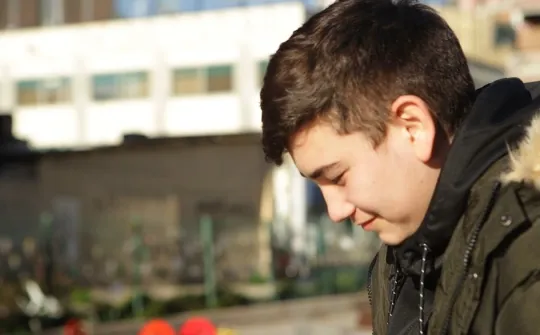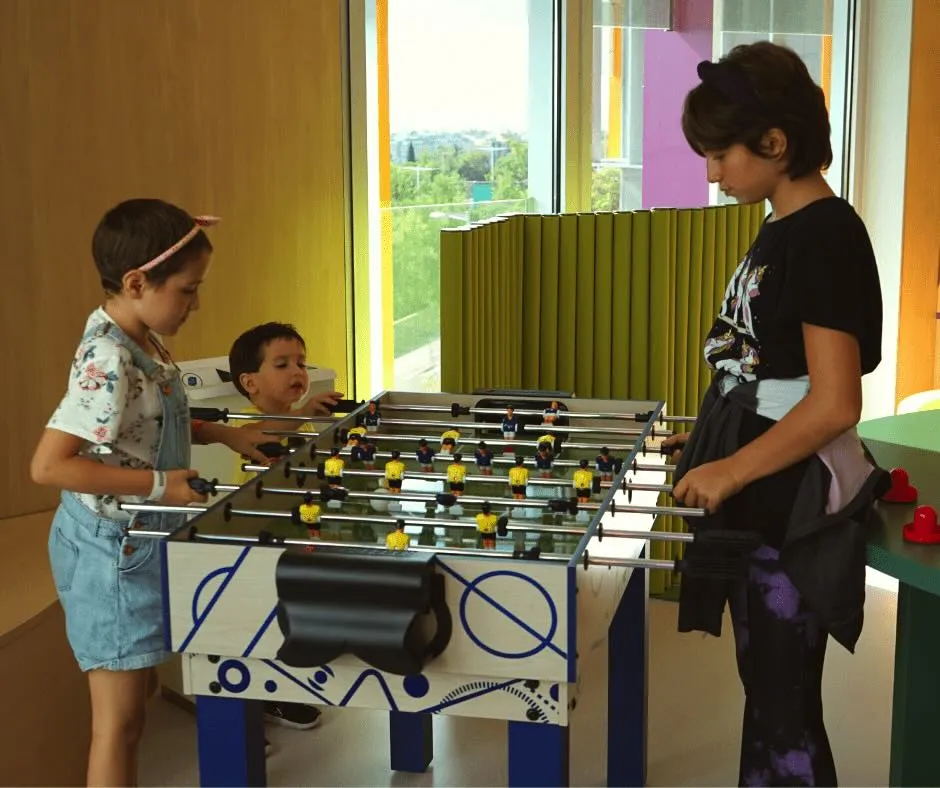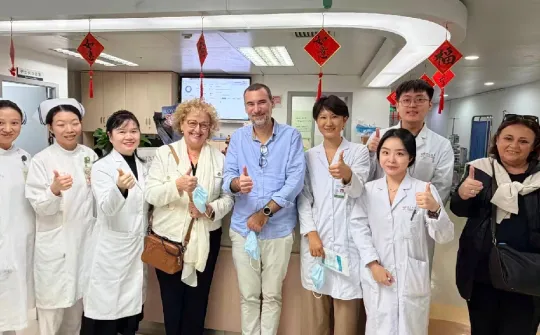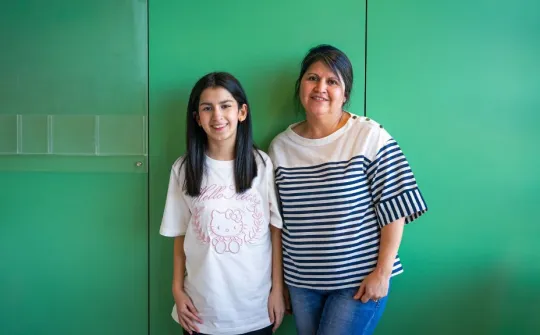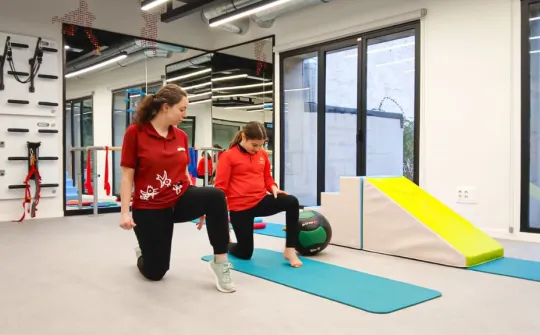"We found out about the CAR-T treatment at SJD Barcelona Children’s Hospital from an Argentinian patient with leukaemia"
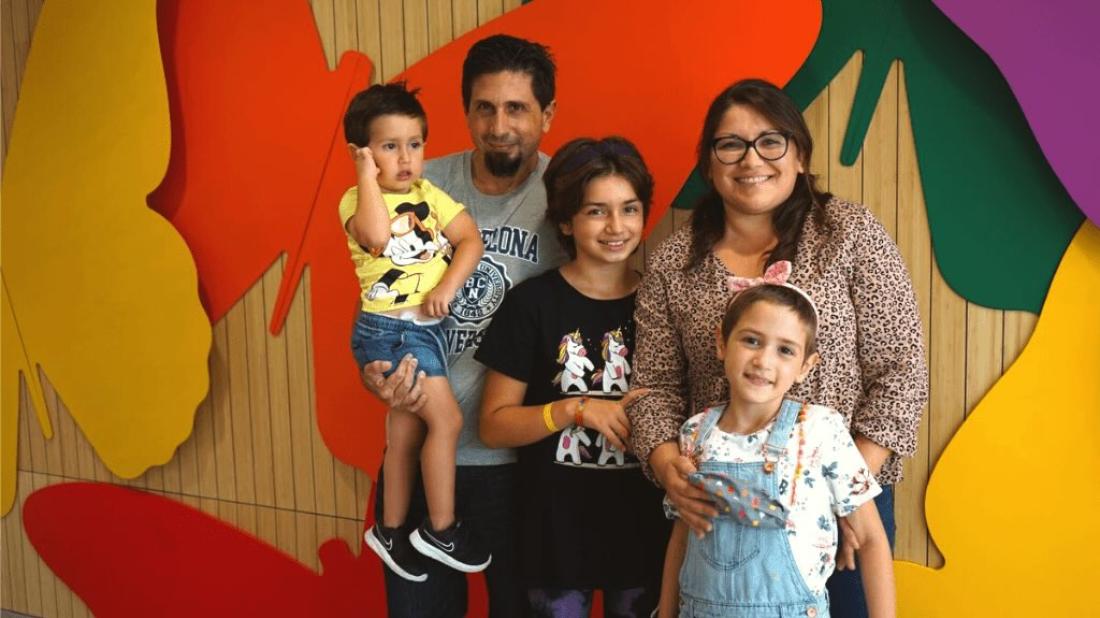
The family of Emily, who was treated for acute lymphoblastic leukaemia for 5 years, tells us how the girl has fought against the disease
Emily was diagnosed with acute lymphoblastic leukaemia at a hospital in Argentina when she was two and a half. The medical team at her hospital decided to give her two blocks of chemotherapy and considered the possibility of a bone-marrow transplant, but this treatment was not feasible as her siblings were not a match. After various relapses and while they were assessing her parents’ suitability to be donors, her family began to look for alternatives to chemotherapy.
Emily’s father, Mariano Pérez, remembers how he got in touch with SJD Barcelona Children's Hospital:
“We found out on social media that an Argentinian boy with the same disease was being treated with CAR-T in Barcelona, and that’s when we considered the treatment. We also heard the story of Emily Whitehead, the first child in the world to beat leukaemia with this treatment 10 years ago”.
During a phone call with Dr Susana Rives, paediatric haematologist at SJD Barcelona Children's Hospital, and the patient’s family and doctor from Argentina, Dr Rives explained to them how CAR-T therapy can also fight the extracellular leukaemia their daughter had. This type of treatment with CAR-T cells is a specific immunotherapy for this disease, which is available in only a handful of countries. Susana Rives explains what this therapy involves:
“T-cells are taken from the patient (cells from the immune system) by apheresis, a technique that allows for the separation of blood components and the collection of a certain number of lymphocytes. These are then modified to recognise and attack tumour cells, and transferred back into the patient’s body so that, after reprogramming, they can recognise, attack and destroy the cancer cells”.
Emily’s family arrived at SJD Barcelona Children's Hospital in April 2022. The girl was very ill, had persistent pain and sleepless nights, and the hospital in her home country had been treating her for severe pain and the effects of the disease. Doctors expected a complex process in Emily’s case to fight the leukaemia, and that was indeed how it went.
The oncological haematology team, led by Dr Susana Rives and Dr Ana Alonso, started the treatment in June 2022. Emily previously received chemotherapy to stabilise her in that process. During treatment, the girl was admitted twice to the ICU. The first time was due to a complication related to the CAR-T treatment, which occurs in one-third of cases due to cytokine-release syndrome, and the second time was due to an infection, as Emily’s defences were very low.
Emily was admitted to the hospital for more than two months, and she had a rapid improvement when she was discharged from the ICU. Emily is now in good health and has returned to Argentina, where she will go back to school and lead a normal life like any other 8-year-old girl. She will have to continue with regular check-ups to ensure her disease remains under control, and she will receive a dose of gamma globulins every month.
“We very much appreciate the medical team’s understanding to listen to us as parents, so carefully and respectfully to our beliefs. And the way they were so human and approachable when giving bad news, hugging us as if they were family members rather than doctors”, explained Emily’s father.
Emily’s father, Mariano, finished by emphasising that, as a family, they felt supported by all the staff. “The psychological and spiritual support team, the group of psychologists, the palliative care teams, the volunteers, the music therapy sessions, the clowns, the puppies, the art team... They all make a difference in children’s recovery”.
